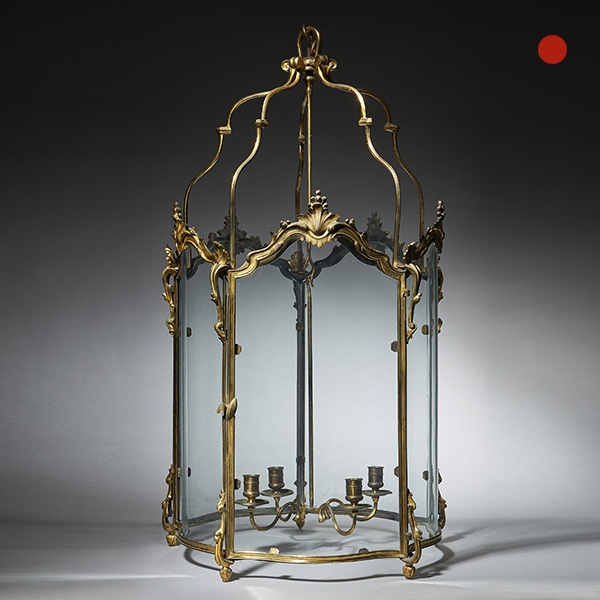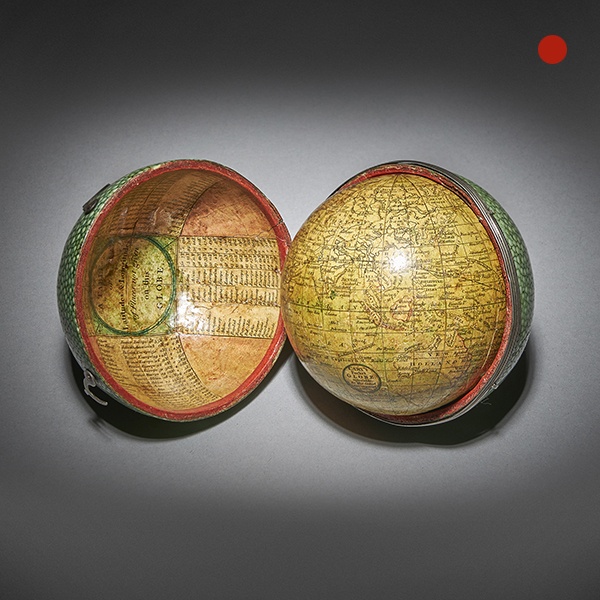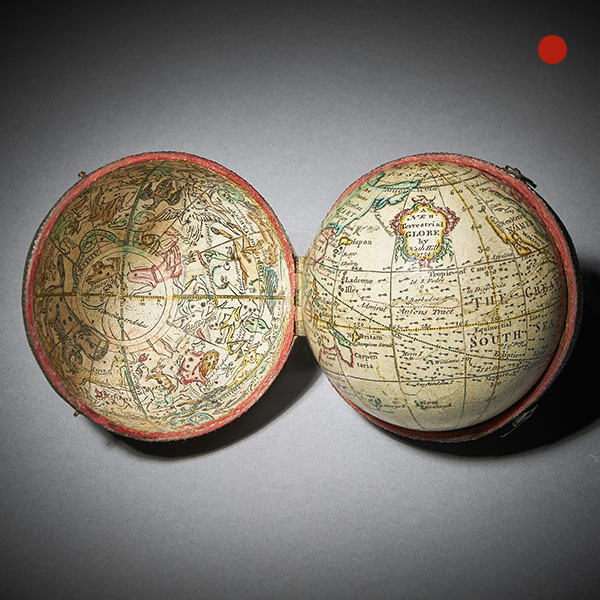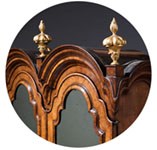17th Century Hague Clock Signed by Pieter Visbagh
CIRCA 1675
Price Enquiry
Follow Us
17th Century Hague Clock Signed by Pieter Visbagh, circa 1675
Unusually small Hague clock made c. 1675 by Pieter Visbagh, who was apprenticed by Salomon Coster. The latter made the first pendulum clock according to the instructions of Christiaan Huygens, the internationally renowned scientist who developed the idea of applying a pendulum to a clock movement.
The delicate ebony-veneered case has a moulded broken arch pediment, whilst the door is flanked by plain half round Doric capital-capped columns on high bases. A traditional star adorns the internal face of the case surrounded by well-chosen cuts of olive in a parquetry fashion. This design of star was also popular in England around this time and was almost certainly introduce by the Huguenots.
The two-day movement is driven by a compact single barrel. The going train has its original verge escapement with a silk suspended pendulum between cycloidal cheeks, also a design by Huygens to improve the trajectory of the pendulum bob. The sides of the backcock are richly pierced and engraved. The striking train is regulated by an external pierced countwheel with a blued steel backing on the backplate to create a lovely contrast; the last hour struck is indicated by Arabic numerals. The striking, which has elaborately pierced striking gates, sounds the hours on a bell inside the case, which has a sound fret in the bottom. The backplate is signed at the bottom by the maker: Pieter Visbagh Fecit Haghe.
The velvet-covered brass dial is hinged on the left hand side, giving access to the movement, which has an almost bronze-like patina caused by age. It has a fine skeletonised gilt-brass Roman chaptering with half hour and Arabic minute divisions. The time is indicated by a fine pair of original gilt brass hands, the hour hand delicately pierced. Below is a shaped and chased signature cartouche, consisting of a crowned coat of arms held by two putti. It bears the maker’s name: P. Visbag Haghe. It is hinged at the top and upon lifting a rectangular hole is revealed through which the pendulum can be activated.
Condition
Good, wear consistent with age and use
Dimensions
H 13.78 in. x W 9.45 in. x D 5.12 in.
H 35 cm x W 24 cm x D 13 cm
PREVIOUSLY SOLD

English 18th Century Chippendale George III Gilt Brass Rococo Hall Lantern
English 18th Century Chippendale George III Gilt Brass Rococo Hall Lantern Sold Follow UsEnglish 18th Century Chippendale George III Gilt Brass Rococo Hall Lantern A superb and original late 18th century George III rococo large gilt brass...

Fine 18th Century English Terrestrial Pocket Globe by Cary, London, 1791
Fine 18th Century English Terrestrial Pocket Globe by Cary, London, 1791 Sold Follow UsFine 18th Century English Terrestrial Pocket Globe by Cary, London, 1791 Cary’s Pocket globe, agreeable to the latest discoveries, London: J&W Cary,...

Fine English Celestial Pocket Globe by Nathaniel Hill
Fine 18th Century English Celestial Pocket Globe by Nathaniel Hill, London, 1754 Sold Follow UsFine 18th Century English Celestial Pocket Globe by Nathaniel Hill, London, 1754 A fine and rare 18th century English terrestrial and celestial...

English 18th Century Chippendale George III Gilt Brass Rococo Hall Lantern
English 18th Century Chippendale George III Gilt Brass Rococo Hall Lantern Sold Follow UsEnglish 18th Century Chippendale George III Gilt Brass Rococo Hall Lantern A superb and original late 18th century George III rococo large gilt brass...

Fine 18th Century English Terrestrial Pocket Globe by Cary, London, 1791
Fine 18th Century English Terrestrial Pocket Globe by Cary, London, 1791 Sold Follow UsFine 18th Century English Terrestrial Pocket Globe by Cary, London, 1791 Cary’s Pocket globe, agreeable to the latest discoveries, London: J&W Cary,...

Fine English Celestial Pocket Globe by Nathaniel Hill
Fine 18th Century English Celestial Pocket Globe by Nathaniel Hill, London, 1754 Sold Follow UsFine 18th Century English Celestial Pocket Globe by Nathaniel Hill, London, 1754 A fine and rare 18th century English terrestrial and celestial...
YOU MAY ALSO LIKE
No Results Found
The page you requested could not be found. Try refining your search, or use the navigation above to locate the post.
No Results Found
The page you requested could not be found. Try refining your search, or use the navigation above to locate the post.













